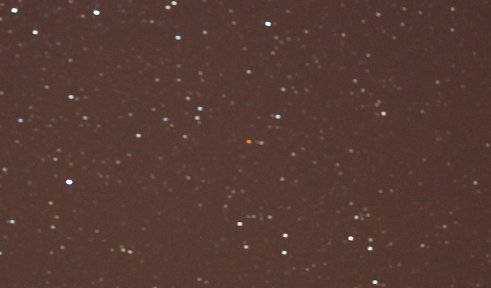
 |
Shining with a deep red light, Hind's Crimson Star, the carbon star R Leporis, lies at center. A long-period Mira variable, R Lep was captured here near maximum light. Mu Leporis shines toward lower left. Such stars are so cool and loaded with carbon compounds that the blue component of starlight is pretty much removed, leaving them a vivid red. Only barely visible to the naked eye, and then only during an especially bright cycle, the star is really a telescopic or binocular object. |